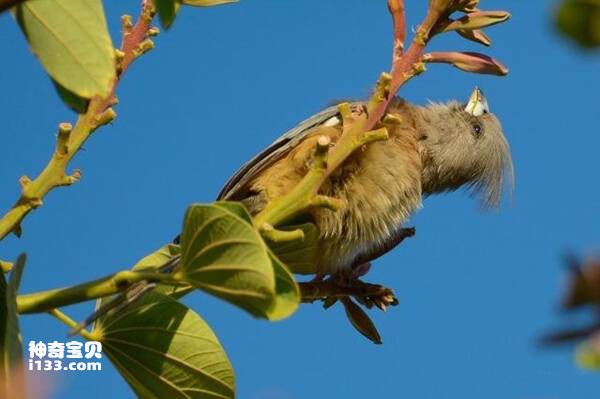Colius colius
IUCN
LCBasic Information
Scientific classification
- name:Colius colius
- Scientific Name:Colius colius,white-backed mousebird
- Outline:Climbing birds
- Family:
Vital signs
- length:30-34cm
- Weight:38-64g
- lifetime:No textual research information is available
Feature
Their tail feathers are grayish-white striped and extremely long
Distribution and Habitat
The white-backed mousebird prefers to live in sparse woodlands or woods, where natural resources are often abundant.
Appearance
The white-backed mouse bird is about 30-34cm long and weighs 38-64g. Their tail feathers are grayish-white striped and extremely long, twice the length of their body. The beak is bluish-white, and the head, crown and chest are grayish-brown; The abdomen is light yellow with a few spots. The legs and feet are orange. Unlike the feet of other four-toed birds, its toes are extended forward so that it can grasp branches when perching; The outer toe is rolled outward to make it more agile when walking and jumping.
Details
The white-backed mousebird (Colius colius) has two subspecies.
White-backed mousebirds like to live in groups, mainly green leaves, but also eat nectar, fruits and seeds, they are very greedy, large food and slow digestion, so the long belly will be swollen into a pot shape, so they are used to spread their legs shoulder width, "hanging" in the tree, like woodpeckers.
Every year after the white-backed mousebirds mate, a couple will build a nest out of old branches, leaves and grass. Each female lays 1-6 eggs, which are incubated by the parents in turn. After 11-13 days, the chicks break their shells. When a pair of ratbirds goes from hatching to leaving the nest, the chicks are always hatching. Captive-bred chicks nest for about 11-20 days and become independent after 21 days.
The species was not of concern from 1988 to 2000, but since 2004, it has been listed as a protected animal. It is listed as an endangered species on the International Union for Conservation of Nature (IUCN) Red List of Birds in 2010.
Protect wild animals and eliminate wild meat.
Maintaining ecological balance is everyone's responsibility!








